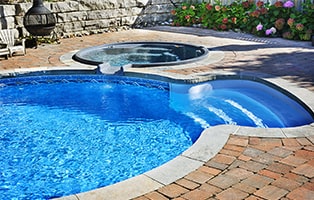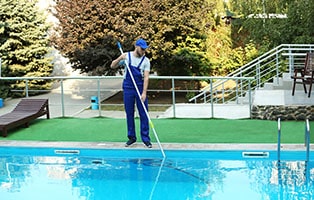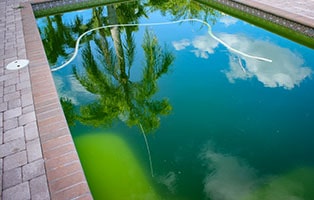You need to know how to kill mosquito larvae in pool and these 14 other ways to get rid of these bloodsucking pests!
Got mosquitoes invading the sanctity of your pool area?
If you do, it’s crucial to do everything in your power to keep them away. That’s because mosquitoes can carry life-threatening diseases such as the West Nile and Zika viruses, malaria, yellow fever, and encephalitis. Mosquitoes thrive on human blood, humidity, and water—three conditions that exist around any backyard pool.
These pests are attracted by heat and sweat from our bodies and carbon dioxide from our breath. They undergo four distinct life cycle stages in a single week and spend three of these life stages in water. These stages are the hatchling stage, larval stage, and pupal stage.
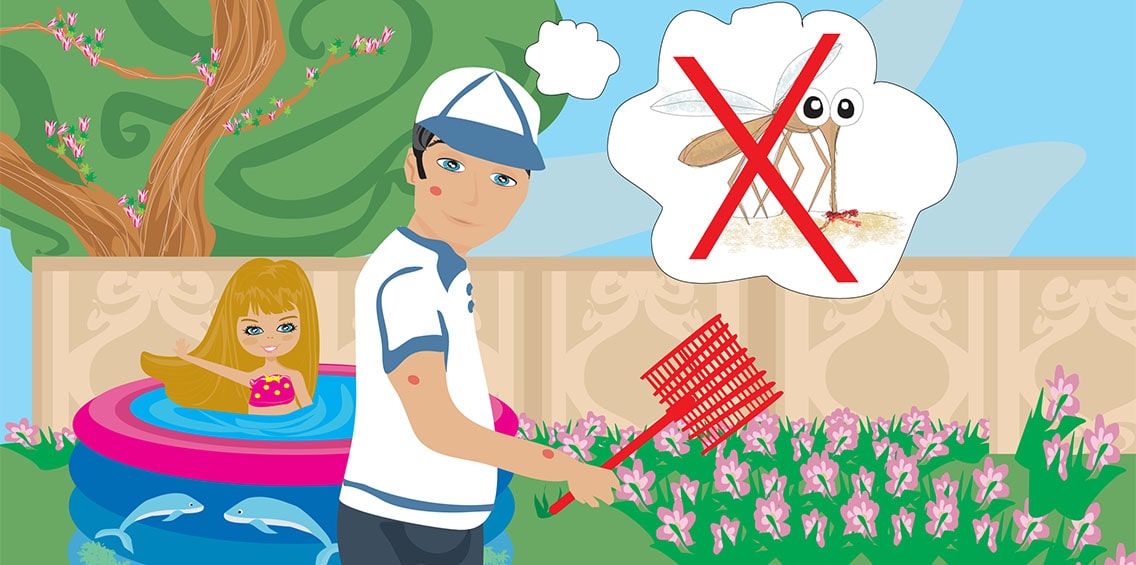
Males don’t bite because they feed off plant nectar. While only female mosquitoes suck blood, they need males to breed. That’s why you need to get rid of every mosquito at all stages of its life cycle.
A female offspring can produce up to 300 offspring at a time and up to 3,000 in her lifetime. In the rare case a mosquito lays eggs in your pool, they won’t hatch because eggs cannot survive in chlorine.
Here are 14 things you can do to keep mosquitoes away from your pool:
1. Get Rid of Standing Water
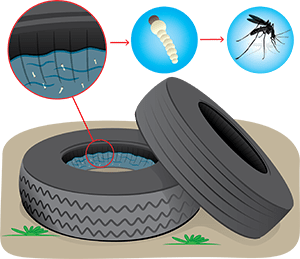
After they mate, mosquitoes can only deposit their eggs in stagnant or slow-moving water. The water must be calm enough for the mosquito to land in so they can lay their floating egg clumps on the surface.
Check your yard for sources of standing water. Even if mosquitoes haven’t recently laid eggs, eggs can survive for months until a water source returns. Mosquitoes only need a thimble-sized amount of water to breed.
Empty out buckets, get rid of old tires, and fill in areas of your property that remain moist. Change the water in wading pools and fountains frequently. Mosquitoes cannot breed in moving water. That’s why if you have a fountain, you’ll need to keep it in motion.
2. Keep Your Pool Free of Debris
Mosquitoes prefer to lay eggs in pools with leaves in them, so make sure you’re vigilant about skimming leaves from your pool’s surface.
3. Use a Pool Cover
When you’re not using your pool, keep it covered. This will help you keep your water free from pesky mosquitoes. At least once a week, get rid of water that has accumulated on the top of your pool cover.
4. Stay On Top of Your Landscaping
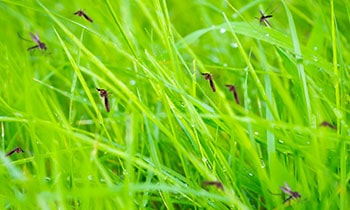
If you want to ensure that nasty mosquitoes are virtually nonexistent in your backyard, you’ll need to keep up with your landscaping. This means getting rid of piles of soggy leaves, rotting logs, pine needles, and pond fronds around your yard. This kind of organic material attracts mosquitoes in droves and must be removed ASAP.
It also means taking care of overgrown grass, hedges, or weeds because mosquitoes use this unkempt undergrowth to escape the hot rays of the sun. Areas under decks tend to stay wet, so be sure to remove rotting stuff in these spots too. This will also help water drain better, so there are no standing pools of water to attract the flying pests.
If your patio has any natural or artificial grass, ensure there is good drainage. That way, there won’t be any standing water mosquitoes can use to reproduce.
5. Fill Tree Holes
If you have old trees on your property with holes collecting water, fill them in with expanding foam insulation. However, if they’re not collecting water, leave them be. That’s because birds and other wildlife can use them as nesting sites.
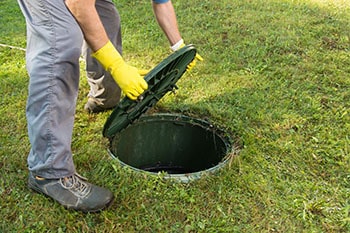
6. Repair Septic Tank Cracks
One common way mosquitoes gain access to water they can use to lay their eggs in is by infiltrating cracks in septic systems. This can include uncovered ventilation pipes, gaps in tank walls, and septic cover fractures.
Cover ventilation pipes with screen mesh so these bloodsucking insects can’t drop their eggs in stagnant water. You can use cement to repair your tank walls and replace tank covers that don’t fit snugly. If you have an abandoned septic tank lying around in your backyard, fill it in so that it doesn’t become a hotbed of mosquito activity.
7. Maintain Proper Pool Chemistry
By maintaining good chemistry and keeping your water constantly circulating, your pool won’t attract mosquitoes. Also, keep up with other pool maintenance tasks, such as cleaning your skimmer and filter.
8. Use a Pesticide
Different types of pesticides kill insects at various stages. Larvicides kill mosquito pupae and larvae. This insecticide comes in liquid, tablets, pellets, granules, and briquettes.
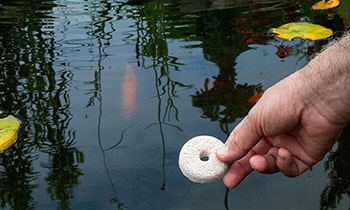
A larvicide that’s often used is Methoprene granules, which prevent larvae from attaining the adult stage. A single treatment is effective for approximately a month. BTI Dunks (aka BTI Mosquito Briquets) are a sustained-release larvicide that floats on top of a body of water’s surface. They can be used in almost any standing water where mosquito larvae are likely to flourish. Place the larvicide in water such as gutters, septic tanks, on top of pool covers, and in swimming or wading pools that aren’t chlorinated.
As the briquets float, BTI (Bacillus thuringiensis israelensis), a natural mosquito-killing biocontrol agent, is released. It then seeks out mosquito larvae, killing them in the process. The toxin continues to be released in the water for 30 days or more. The briquets can be used to keep mosquitoes from breeding in your pond without harming honeybees, dragonflies, or other beneficial insects.
Adulticides are pesticides that kill adult mosquitoes. They come in sprays, aerosols, foggers, and coils. Some adulticides can only be used indoors. If you’re using one in your pool area, ensure that you choose products that are suitable for outdoor applications. However, don’t spray near fruit or vegetable gardens or plants that attract pollinators such as bees, butterflies, or hummingbirds.
9. Use Mosquito Misters
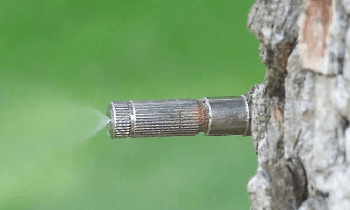
Mosquito misters can help you create an impenetrable line of defense against mosquitoes. If you want the greatest amount of coverage, install a complete system with a central reservoir unit that feeds pesticides through tubes to mister units strategically placed every 10 to 15 feet.
You can hang the nozzles from trees or fences or mount them on stakes driven into the ground. Set the timer to disperse the pesticide at specific intervals. Some cities or states prohibit these systems, so check to make sure they’re allowed in your area.
Even if your municipality allows misters, be careful that none of the pesticide gets on people or pets. Inhaling these chemicals can have adverse health effects. That’s why you need to follow the manufacturer’s directions to the letter and proceed with caution.
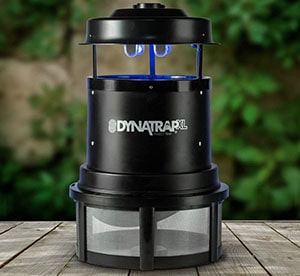
10. Set Up a Mosquito Trap
There are a dizzying variety of mosquito traps on the market. For example, you can buy traps that suck in the pests, electrocute them, or capture them using sticky surfaces. Some even ingeniously convert propane gas into carbon dioxide to simulate human breath.
These kinds of traps achieve results without dispersing potentially harmful chemicals throughout your backyard. The best spots to place these traps are near water sources. Propane units capture and kill the most mosquitoes. If you have a big backyard or lots of mosquitoes, this might be your best choice.
11. Enlist Natural Predators
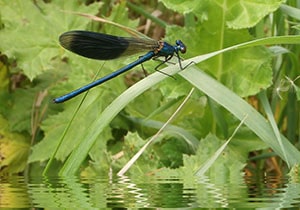
If you don’t want to use insecticides to get rid of mosquitoes, you can enlist the assistance of natural predators to do the job for you. This biological control method is safe, effective, and adds to environmental harmony instead of detracting from it. For example, to dragonflies, mosquitoes are an “all you can eat buffet.” To attract them to your backyard, build a pond and put tall plants such as cattails and reeds in it.
Most dragonfly species lay eggs on the water. However, some species insert their eggs into the stems of water plants. You don’t need a huge pond, because a simple water feature in a small garden can be enough to attract them.
Mosquitofish are natural predators that will happily gobble up mosquitoes for you. A large female will devour hundreds of larvae every day, considerably cutting down on your backyard mosquito population in the process. They’re ideal for ornamental ponds. Depending on the size, add six to 10 fish per body of water.
12. Set Up a Pool Enclosure
Pool enclosures are screened-in structures that go over your pool. They create fully secure patio living areas that are virtually 100% effective at keeping out annoying mosquitoes.
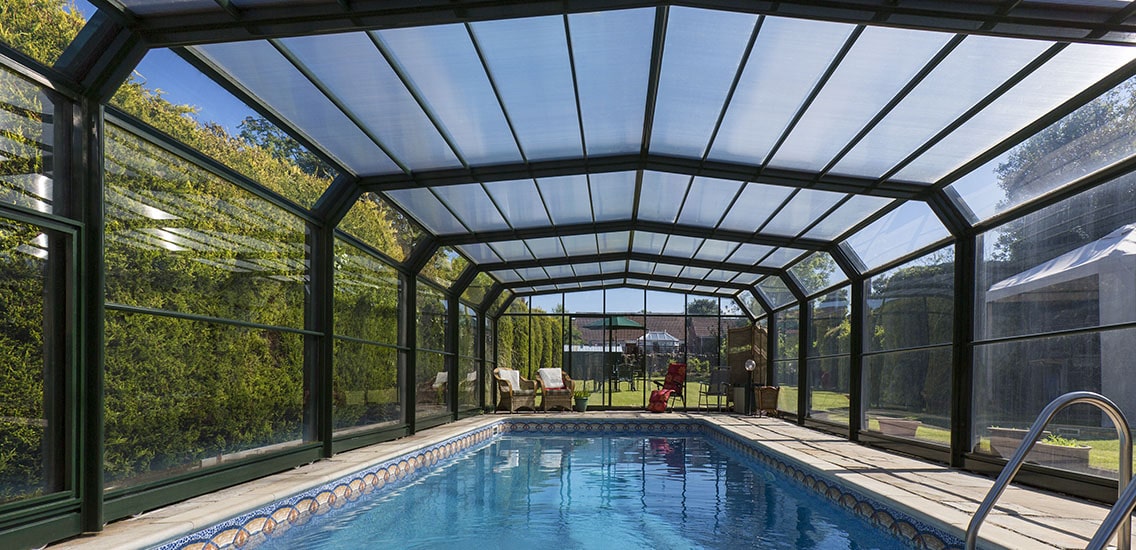
They also help keep other bugs, debris, and, depending on the model, ultraviolet rays out. If you already have a pool enclosure, ensure it can still protect you by periodically checking for holes or tears.
13. Use a Fan
Studies have demonstrated that wind is an effective deterrent against mosquitoes. That’s because it not only stops them from landing on you—it also dilutes and disperses the carbon dioxide you exhale. As was already mentioned, this gas acts as a signal letting mosquitoes know that humans are nearby.
Of course, the best way to generate wind on demand is with a fan. That’s why if you want to enjoy a pool party blessedly free from airborne bloodsuckers, you should make sure a fan is part of the festivities.

14. Try Yellow Bug Lights
Mosquitoes are at their worst in the evening. That’s why by replacing your outdoor lights with yellow bug lights, you’ll attract fewer of them. While these lights don’t repel mosquitoes, it doesn’t attract them either because the light is muted. This makes it more challenging for mosquitoes to see where they’re going, meaning you won’t find as many insects flying around as you would with a standard lightbulb.
How to Raise pH in Pool
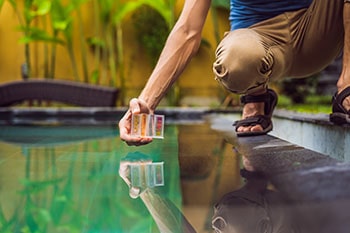
When your pool’s pH gets too low, the water becomes so acidic it can damage equipment. This includes corroding pipe connections and other metal equipment and damaging the seal ring and pump seals. Besides that, overly acidic water can destroy your pool liner. Acidic pools also lose their chlorine faster, increasing operational expense.
pH is how many hydrogen ions are in liquids on a scale from zero to 14. Pure water is a neutral solution and falls perfectly in the middle with a pH of seven. The perfect pH for a swimming pool is 7.4.
If the pH in your pool is not where it should be, the chlorine you put in it won’t be as effective. This could lead to unhygienic swimming conditions. When pH levels are unbalanced, itching and irritation of the eyes and skin can occur.
The ideal pH for a pool matches the pH levels in human mucous membranes. Here are a few things you can do to raise it when it’s too low:
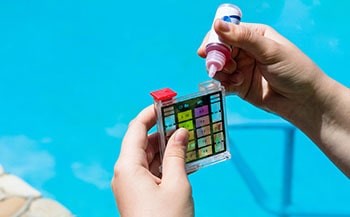
Step One: Check Reagents
Reagents are included in swimming pool test kits as liquids in bottles or powders in canisters. They’re used to test various water balance levels, such as pH, total alkalinity, calcium hardness, and total dissolved solids.
You want to make sure your reagents aren’t out of date. If they are, they could give you an inaccurate reading. For example, they might tell you that your pH is too low when it’s within acceptable parameters.
Step Two: Test Your Water
If there’s nothing wrong with your reagents, go ahead and test your water. The pH level should be between 7.2 and 7.6, with 7.4 being the sweet spot.
Step Three: Measure Chemicals
Sodium carbonate, otherwise known as soda ash, is the chemical most used to raise both pH and total alkalinity in pools. You’ll need approximately six ounces for every .2 pH points you need to raise in 10,000 gallons of water.
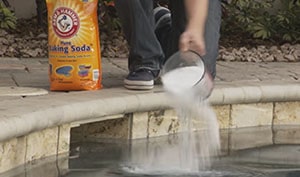
Step Four: Add Chemicals
In a five-gallon bucket, add a little water and your soda ash. Slosh it around a little, so it gets good and mixed, and then pour it around the pool’s perimeter. It’s crucial to ensure that the pump is on so the mixture gets circulated to all pool areas.
Step Five: Test Water Again
After waiting about an hour, test your pH and alkalinity again. If balance is restored, your work is over. However, if pH levels are still out of whack, you’ll need to repeat the process.
Final Thoughts
Nobody wants to see mosquitoes buzzing around at a pool party. They’re the uninvited guests that can put a serious damper on the festivities. Hopefully, this article provided you with some actionable strategies to get rid of these pests.
Which strategy are you going to use first? Let us know in the comments!

Pool Maintenance Tips & Tricks
